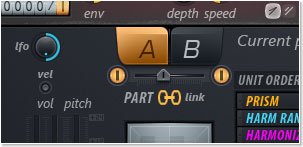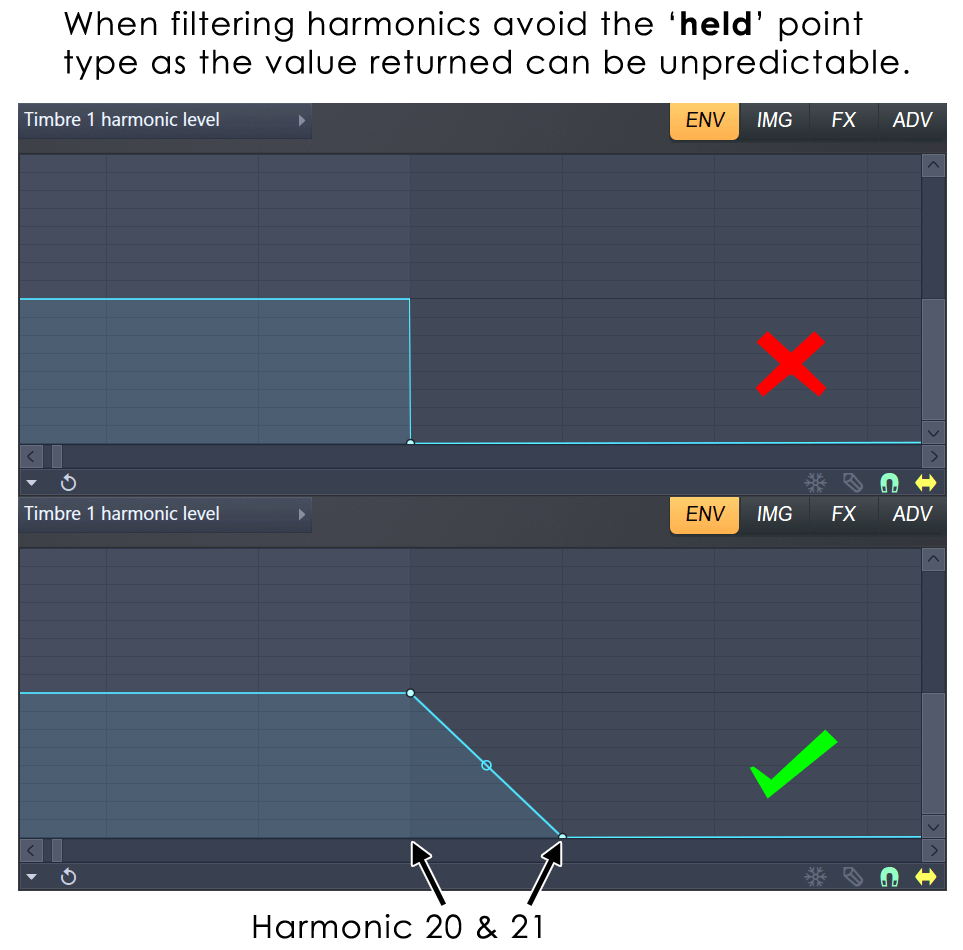

Effects can be re-ordered on the Adv(anced) page. There are loads of effects, for a start, including reverb, delay, distortion, chorus and compression. However, we should point out that Harmor also has a host of more traditional features on offer. We simply haven't got the space to describe every parameter in detail. This seems an obvious task for an additive resynthesiser, and we're glad to see it taking its place here.And the rest Of special note is Harmor's ability to analyse audio and create an envelope based onthat analysis. As you'd expect, stages can be locked to project tempo. They are powerful enough that they double as sequencer and arpeggiator as well as a standard envelope. These are the massive multistage envelopes also seen on Image-Line's Sytrus, and they can be applied to virtually any parameter that matters. The envelopes and LFOs share the same display and features. Harmor's envelopes play a significant role in its ability to produce sounds of stunning complexity. Setting short times garners sounds similar to synth legend Don Buchla's low-pass gate, making it easy to get your bongo on, if you are so inclined. The latter deserves special mention: it functions as a fast-decay low-pass filter envelope to simulate plucked strings. The filters are joined by Phaser and Pluck sections. Since the perception of an additive tone relies somuch on the fundamental, there is a Prot(ection) slider in the Timbre section that ensures the lowest frequencies squeak through unharmed. You canchoose from the usual filter mode suspects, with the addition ofCustom Shapes these are defined inthe ENV(elope) display and are drawn in just like the additive waves. Harmor sports a dual-filter configuration thatincludes allof the normal goodies. Both have the effect of thickening the sound in some way, or creating dissonant timbres.Īnother thickener comes in the form of a sub-harmonic generator, which is used to add bass and depth. The former simply shifts the positions of the partials, making them inharmonic while the latter replicates and transposes harmonics. Examples of these new paradigms include the Prism and Harmonizer sections. Harmor includes many ways to tweak your waveform, and some of them might be unfamiliar.
#Fl studio harmor dll Patch
It should be noted that each patch can consist of two complete and individual patches that are stacked or dynamically mixed. Up to 520 partials may be present in any waveform. You can draw directly in this window and import single-cycle waves, audio files or images to create your own waveforms. However, those waveforms are generated by additive means, and displayed in the Env window. There are, for instance, selectable oscillator waveforms - a pair per 'Timbre' - that can be mixed as you see fit. Even typically subtractive elements like the filter are achieved via additive technology. The developer positions Harmor as an 'additive/subtractive' synthesiser, but there's no doubt that the emphasis is on the former.

Format-wise, it's aVSTi and FL Studio plug-in. Step 3 - Actual ImagesĮven as I'm working with a beat, it's easy, at any point to drop something else into Harmor's image panel, and go to a soundscape built off something completely different, still being orchestrated by the additive engine.With its charcoal and plum shadings, its look is also unmistakably Image-Line. Especially Generate Random Cloud, which spits out random, static images on several planes. These commands do actually adjust the visual image of the waveform, as well as alter the sound in very unexpected ways. If not though, you'll find that you can have very basic fun having Harmor Crossfade the image (10%-50%), Degrade (Horizontally, and Vertically), as well as classic image editor commands like Invert and Flip Horizontally. In fact, Image-Line made it extremely easy to move between image editors, if you'd like to take this to another level.

If you look at several of the available options, you'll note that they are, in fact, options you'd normally reserve for applications like Photoshop, or Gimp, and many other image editors. And, because it's now just a 2D image, the Image Options menu is now populated with editing options for an image! Once we're in Image Synthesis mode, where Harmor is no longer looking at all of the spectral layers of information that makes up the whole of the audio file, and only looking at what is now a converted, 2D image, in which Harmor uses to produce audio.


 0 kommentar(er)
0 kommentar(er)
